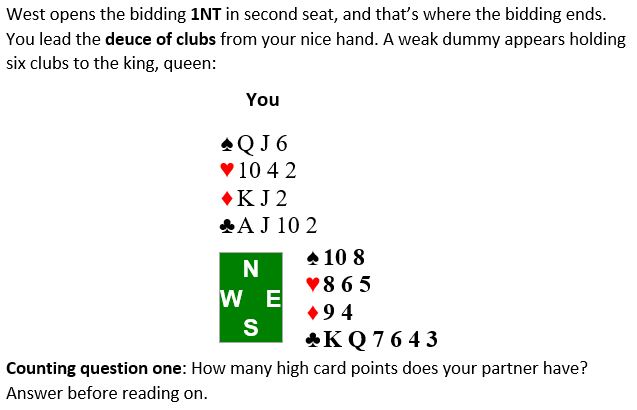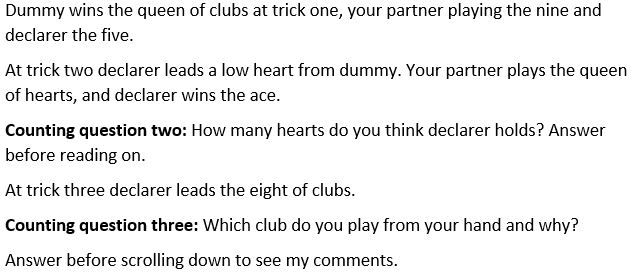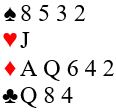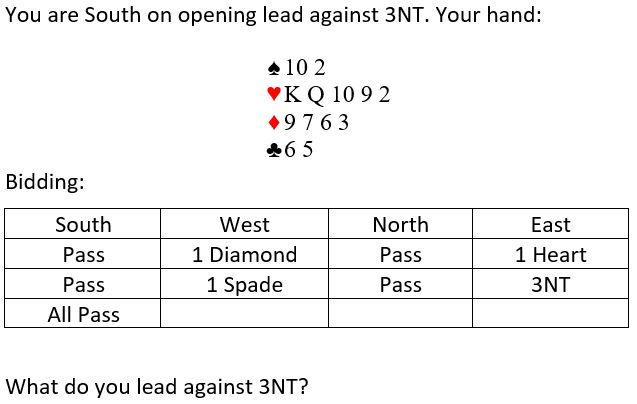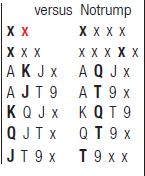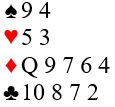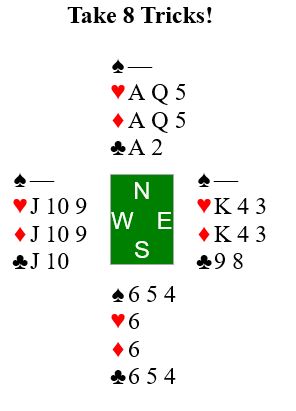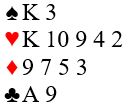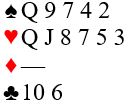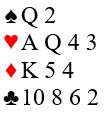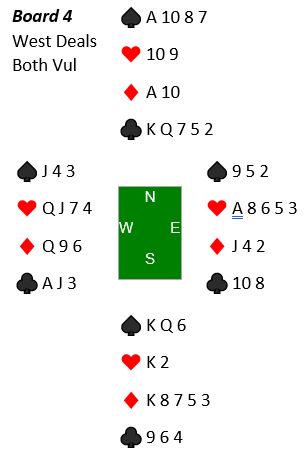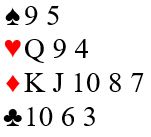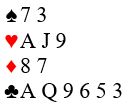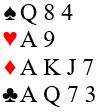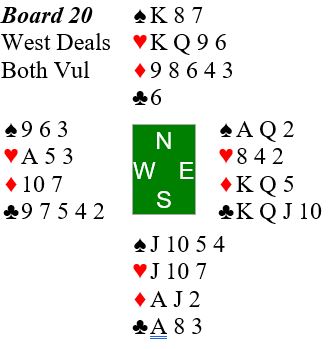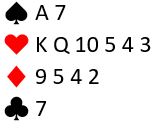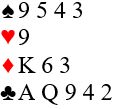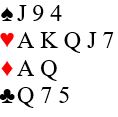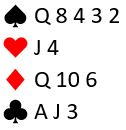Hi, all:
I have three posts based on yesterday’s game. The first one is on defensive strategy.
I was South declaring 3 spades on board 2 after the following bidding:

Here is the entire hand:

I chose to overcall two spades rather than using the Michaels cue bid of two clubs, since my hand was in the intermediate range of 12 to 15 HCP. I was in the top of that range, so decided to raise to three spades to head off competition in the minors.
West made the good lead of the club king. How do you think East should defend?
East should be delighted with her trump stack, and should encourage continuation of clubs by playing the club six. The idea is to pump declarer (shorten his trump suit so that he loses control). That way it’s difficult to make three spades without looking at the hands. From the bidding declarer can “see” the missing high cards in East’s hand, in particular the ace of hearts and king of spades. What declarer cannot see, however, is the four-zero trump break.
BTW, notice that I could have made three spades by ducking the first three club leads. Dummy can ruff the 4th club, and careful play holds the opponents to three club tricks plus the ace of hearts.
Board 9 provides another lesson in defensive strategy.
North arrives in 3NT on this bidding:

East leads the four of hearts from this crummy holding and observes this dummy:


It’s a good lead from the unbid suit, hoping to find your partner (who is not as broke as you are) with length and an entry after it’s set up. Partner plays the queen and North wins the ace of hearts. Next he finesses the queen of clubs which loses to the king. Back come the seven of hearts from partner which loses to North’s king. Dummy now runs the remaining five clubs. What do you discard from your hand on the last three clubs?
Do you remember the bidding? Hold on to those diamonds for dear life! Discard two hearts and a spade. Don’t give away overtricks at matchpoints by letting declarer set up his diamonds. This is known as maintaining parity with declarer.
